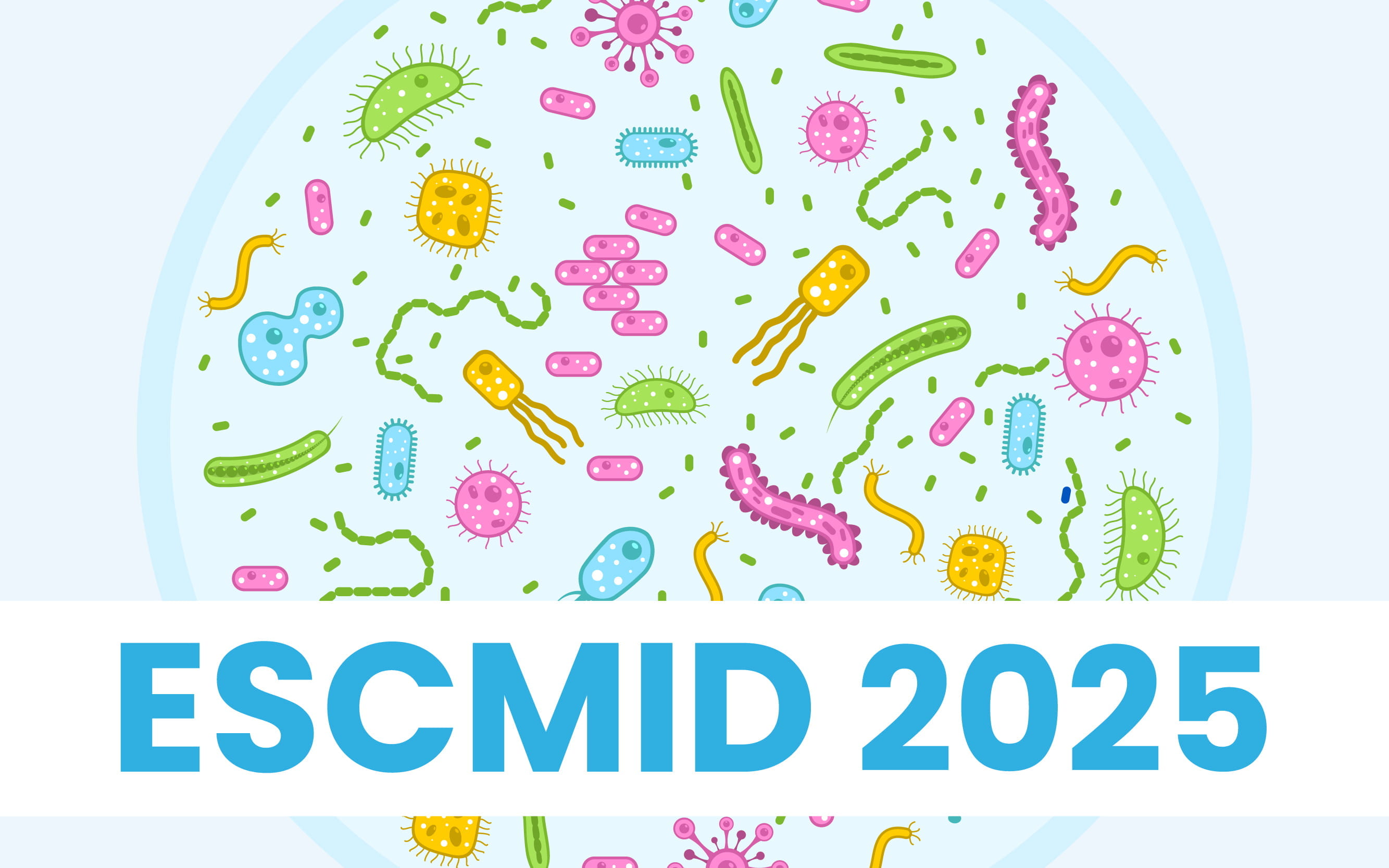ECCMID 2023: New Vaccines In Clinical Development
Part 1: The session discusses about the high rates of adverse events among placebo recipients in a double-blinded, randomized, placebo-controlled phase 2b trial of an oral vaccine against enterotoxigenic Escherichia coli (ETEC). ETEC is a significant pathogen causing diarrhoea, particularly in children under five in low and middle-income countries. The trial was conducted on 749 immunologically healthy Finnish adult volunteers, who were randomized into vaccine and placebo groups. The results of the safety and tolerability showed that the majority of the adverse events were recorded and categorized as solicited (loose stools/ stomach-ache) or unsolicited (gastrointestinal and nervous system disorders, mainly headache, fatigue, chills, and elevated temperature), and their severity was also noted with no significant difference between the placebo and vaccine groups. The baking soda is a traditional household remedy for treating heartburn and indigestion may not be well tolerated by some individuals and can cause adverse effects such as nausea and bloating. The comprehensive findings from the study suggests that Double-blinded RCTs are paramount in evaluating adverse events of any investigational medicinal product. The study sheds light on the efficacy and safety of the Clostridioides difficile Vaccine to prevent Clostridioides difficile infection (CDI) in adults. CDI is a major pathogen that causes morbidity and mortality, with over 400,000 cases and 30,000 deaths annually in the US alone. The Clover trial is a double-blinded, randomized, phase-three controlled trial that evaluated a vaccine against C. difficile to prevent CDI in adults aged 50 years and above. The primary endpoint was vaccine efficacy in reducing primary CDI incidence at least 14 days after the third dose of vaccine. The secondary endpoint was reducing all cases of CDI, both primary and recurrent, after the third dose. The vaccine efficacy was found to be 31% for the primary CDI and 11.1% for all cases of CDI. However, no one in the vaccine group sought medical care for the primary CDI episode, and 11 in the placebo group. The vaccine was safe and well tolerated in high-risk patients to prevent the recurrence of CDI. Imvanex (IMx) is an older vaccine with a new indication for monkeypox (Mpox) in a high-risk population. It is a Modified Vaccinia virus Ankara (MVA) vaccine, which cannot replicate efficiently in human cells and has fewer side effects than earlier-generation vaccines. Before the vaccination campaign, there was no data on the immunogenicity of IMx against Mpox in humans. Therefore, a biobank study was conducted on high-risk individuals in the Netherlands, including lab workers and Men Who Have Sex With Men(MSM). The study found that the majority of study subjects developed binding antibodies against the MVA after the second vaccination. Still, only 63% of participants in the non-prime group (born after 1994) developed antibodies that could neutralize Mpox, and the titers were relatively low.
Part 2: The study also examined whether IMx induced Mpox cross-reactive T-cell responses and whether historic smallpox vaccination induced cross-reactive antibodies against Mpox. A cellular assay was performed on 34 participants from the MSM cohorts who received two doses of the IMx vaccine. The activation induced marker (AIM) assay isolated CD4 T-cells and stimulated them with orthopox and Mpox -specific peptide pools. The results of the study revealed that CD4 T-cell responses induced by IMx can cross-react with the virus that causes Mpox. However, the vaccine generated low Mpox-specific neutralizing antibodies in individuals who did not receive a smallpox vaccine during childhood. The long-term protection against disease, transmissibility, or the need for booster vaccination, is currently unclear.
Chikungunya is a mosquito-transmitted disease that causes large explosive outbreaks across Asia, Africa, and Latin America The disease has no cure, and treatment is symptomatic and supportive. Prevention is limited, and currently, there is no vaccine available. The Live-attenuated CHIKV vaccine has been granted fast-track and breakthrough designations by the FDA, and the BLA submission process has been completed. A lot-to-lot consistency trial of the VLA1553 vaccine showed that all the three lots (L1, L2 and L3) of this vaccineis highly immunogenic with a strong and persistent immune response in at least 97.5% of individuals. CHIKV-specific neutralizing antibody titers also exceed the threshold that is likely to predict protection against the virus. The vaccine's safety profile is consistent with previous phase 3 pivotal studies, with no significant differences between lots. Overall, VLA1553 is well-tolerated in the population studied in clinical trials. The study highlighted the importance of the COVID-19 Influenza combination (CIC) vaccine due to the potential emergence of new variants and the need for annual boosters. As the transmission of influenza is expected to increase in the future and neutralizing antibody responses to SARS-CoV-2 decrease over time, a combination vaccine could effectively tackle both problems and should be developed to anticipate the future need for annual immunization against SARS-CoV-2 and influenza viruses. The vaccine contains hemagglutinin, a spike, and an adjuvant matrix and is produced using a baculovirus Sf 9 cells platform). A vaccine was tested on 640 adults aged 50-70 to assess its safety, immunogenicity, and optimal dosage. Participants received two doses (56 days apart) of varying levels of recombinant spike and hemagglutinin with an adjuvant, and the primary outcome was the first dose-response and t-cell data after the first dose. Comparable groups received the EUA COVID-19 vaccine. CIC vaccines showed good safety and tolerance with strong immune responses against SARS-CoV-2 and influenza strains. Some formulations produced responses comparable to standalone vaccines, but there was slight interference between rs and HA antigens, which can be overcome by dose adjustment. The next speaker Chelsea Mclean discussed the safety and immunogenicity of a booster dose of Ad26.ZEBOV (Zabdeno®) is given up to 4.5 years after the initial Ad26.ZEBOV and MVA-BN-FiIo primary regimen in phase 2 and 3 trials conducted in different populations in Africa. The safety data showed that the AD26.ZEBOV booster dose was well-tolerated with mild to moderate adverse events. The immunogenicity data showed that binding antibody levels remained high for several years after completion of the primary regimen, with a maintained plateau. The binding antibody response was measured before and after the booster and a sharp increase in binding antibody geometric mean concentrations (GMCs) was observed within seven days of administration of the booster. The binding antibody GMCs continued to increase until 21 days post booster and persisted for at least one year. The data shows that Anti-EBOV GP antibodies persist long-term after the first dose, but it is unknown if they can control an Ebola virus infection. A booster dose of Ad26.ZE30V administered up to 4.5 years after the first dose, induces a strong immune response. The anamnestic response post-booster suggests that natural exposure may also contribute to protection. Respiratory syncytial virus (RSV) is a contagious virus that can cause respiratory infections and worsen respiratory conditions. However, it is often overlooked in older adults due to limited data and inconsistent testing. In 2019, RSV caused 5.9 million cases, hospitalizations, and deaths in adults over 60 in high-income countries. In the US alone, there are over a million outpatient visits for RSV in adults over 65 annually. A new vaccine based on messenger RNA that encodes the pre-f protein stabilized in the pre-f confirmation was developed for RSV A strain, which was hoped to provide cross-protection for RSV B. The pivotal phase two-three trial studied over 35,000 subjects in 22 countries globally. The mRNA-1345 vaccine effectively prevented RSV disease in adults aged 26 to 60 years with a good safety profile. In addition, symptoms occurred less frequently in the vaccinated group than in the placebo group. The phase 3 clinical trial is ongoing, with additional analyses planned for up to 24 months. Seasonal influenza can cause respiratory illness and strain healthcare systems. Available vaccines produced by egg, cell, or recombinant-based methods have varying effectiveness. However, mRNA-based vaccines have the potential to overcome these limitations. The mRNA-1010 vaccine is being developed to address the challenges of the currently available seasonal influenza vaccines. It has four mRNA sequences encoding from the four strains recommended by the World Health Organization, expressed as membrane-bound protein. Safety and immunogenicity data from the first-in-human phase one and two studies conducted in adults aged 18 years and above in the US have been released. The mRNA 1010 vaccine produced strong antibody responses in all study groups, surpassing the threshold for a 50% reduction in the risk of influenza infection. In addition, the vaccine had higher antibody levels for A strains and a comparable response to the licensed vaccine for B strains. Overall, the mRNA-1010 vaccine has shown no safety concerns after six months of vaccination and has elicited strong antibody responses against influenza. In addition, it showed broader antibody responses against different strains of influenza and has induced sustained polyfunctional CD4+ T-cell responses. The iNTS GMMA Vaccine Trial or Salvo trial is a study investigating the safety and immunogenicity of the invasive non-typhoid Salmonella (iNTS) GMMA vaccine in sub-Saharan Africa, where iNTS is a cause of meningitis, Bacteraemia and bloodstream infections. The vaccine is based on genetically modified strains of S. Enteritidis and S. Typhimurium to increase the production of auto membrane vesicles and detoxify them by modifying the lipid. The study was a randomized double-blind placebo-controlled trial involving 31 participants between the ages of 15 and 55. The vaccination schedule is zero, two, and six months, and all participants receive the second vaccine except one who withdrew due to family circumstances. The comprehensive data analysis revealed that the side effects of the treatment were mild to moderate injection site reactions that resolved on their own. No safety concerns were identified that would hinder further development of the treatment. The US Advisory Committee on Immunization Practices has recommended inactivated influenza vaccine for all pregnant women since 2004. This includes the recombinant influenza vaccine (RIV), which has been available in the US since 2013, and limited data on its safety during pregnancy has been available. A post-licensure observational study was conducted to assess the safety of RIV4 during pregnancy. The primary objective was to assess the safety of quadrivalent RIV compared to quadrivalent inactivated influenza vaccine in pregnant women and their offspring. The study enrolled 42,684 self-identified Chinese subjects who received either RIV4 or SD-IIV4 influenza vaccines. The demographic characteristics were similar between the two groups. The safety results showed that there were very few post-vaccination adverse events, and no acute hypersensitivity reaction or fever occurred after RIV4. Fifteen PSDI occurred after SD-IIV4 during the Day 0-13 risk interval. There were 24 total PSDI after both vaccines during the Day 0-41 risk interval, .but there were no cases of serious adverse events following either vaccine. The study found that comparing RIV4 with SD-IIV4 there were no differences in pregnancy, birth, and neonatal/infant outcomes.
European Congress of Clinical Microbiology and Infectious Diseases 2023, 15th April - 18th April 2023, Copenhagen, Denmark



